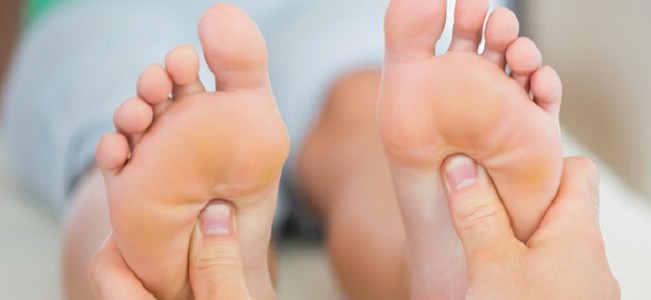
What is Diabetic Foot?
If you are diabetic, (have high blood sugar levels) you are at high risk of developing foot problems which can be serious and result in limb loss, as over time Diabetes can damage your nerves, blood vessels or both.
The initiating injury may be from acute mechanical or thermal trauma or from repetitive or continuous applied mechanical stress most commonly from ill-fitting footwear.
Once the skin is broken, many processes contribute to defective healing, including bacterial infection, tissue ischaemia, continuing trauma, and poor management.
What is Nerve and Blood Vessel Damage?
 Sensory Nerve damage from diabetes can cause you to lose feeling in your feet. This can result in no protective symptoms guarding against pressure and heat and so trauma can initiate the development of a leg ulcer.
Sensory Nerve damage from diabetes can cause you to lose feeling in your feet. This can result in no protective symptoms guarding against pressure and heat and so trauma can initiate the development of a leg ulcer.
Motor Nerve damage leads to undue physical stress and the development of further anatomical deformities (arched foot, clawing of toes). These results in abnormal forces being applied to the foot and contribute to the development of infection and ulceration.
Autonomic Nerve damage leads to altered blood flow regulation and diminished sweating which is responsible for dry skin and fissures. Consequently, the feet are rendered prone to infection and ulcers.
Damage to the blood vessels can also mean that not enough blood and oxygen reach the foot. This makes it harder for your foot to heal if you get a sore or infection.
How can you help avoid foot problems?
- Control your blood sugar levels
- Good foot hygiene is also crucial:
- Check your feet every day
- Wash your feet every day
- Keep the skin soft and smooth
- Smooth corns and calluses gently
- Protect your feet from hot and cold
Improving Blood Flow to the Legs
 In patients with diseased blood vessels, prompt revascularisation is imperative to improve clinical outcome and limb salvage rate. This is usually can be achieved by opening up the blocked blood vessel using a small, flexible plastic tube, or catheter, with a “balloon” at the end of it. When the tube is in place, it inflates to open the blood vessel, so that normal blood flow is restored. This procedure is known as angioplasty which is currently the procedure of choice for the treatment of any significant narrowed or blocked blood vessels lesions.
In patients with diseased blood vessels, prompt revascularisation is imperative to improve clinical outcome and limb salvage rate. This is usually can be achieved by opening up the blocked blood vessel using a small, flexible plastic tube, or catheter, with a “balloon” at the end of it. When the tube is in place, it inflates to open the blood vessel, so that normal blood flow is restored. This procedure is known as angioplasty which is currently the procedure of choice for the treatment of any significant narrowed or blocked blood vessels lesions.
Read more:

Mr Moawad wrote a book chapter on the Diabetic foot which aims to provide condensed, crystallised knowledge.
He also describes tips and tricks and identifies pitfalls as well as critical factors in deciding appropriate management which could otherwise result in loss of limb or life.
Clinical Pathways in Emergency Medicine
Volume II , published in 2016
